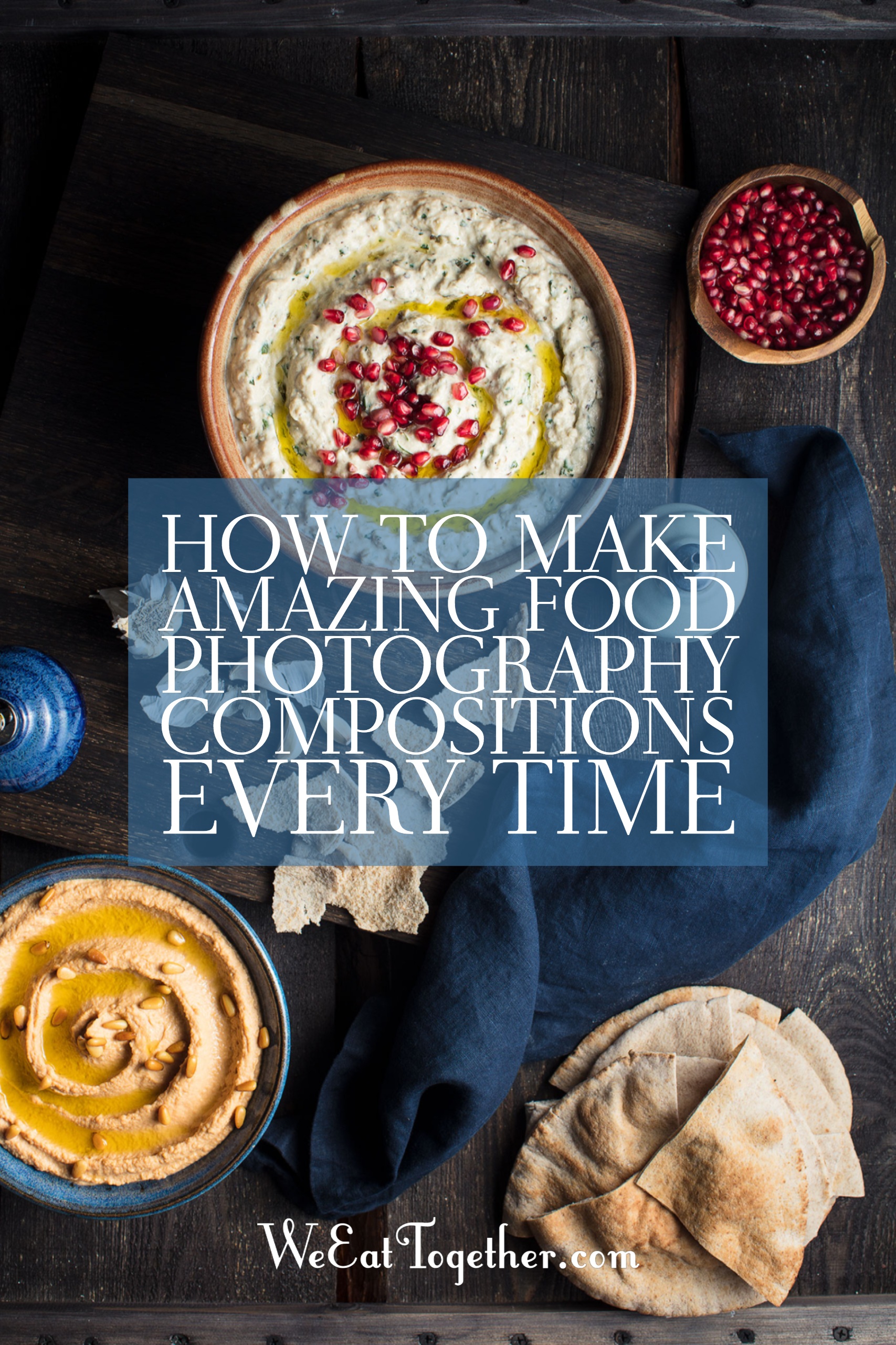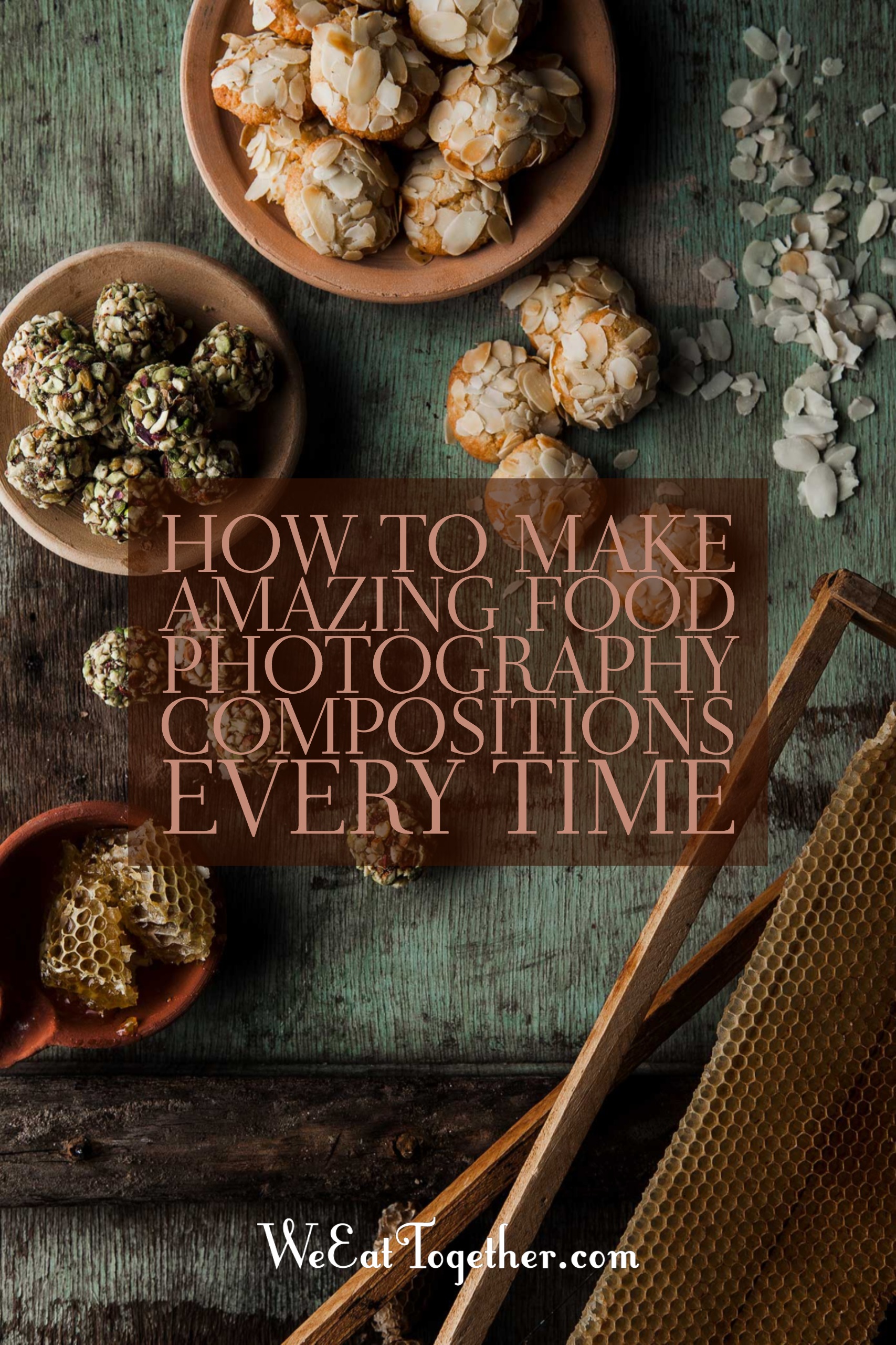From simple to complex scenes, food photography composition is actually my true love. I’m just a guy who loves to move things around a table, one tiny nudge at a time. I actually wrote a huge detailed guide about food photography composition here that will walk you through everything you need to know. As a food photographer, of course I love food. I love eating it. The shear shapes, colors and textures of what we eat is varied and exciting. Not to mention food is an important part of all of our lives and we should document it.
"food photography at it’s core is about freeing yourself from being forced to make due with what is already present in a composition"
When it comes to photography, moving a bunch of props around the frame is what I truly enjoy. I’m sure if you distilled your passion down to the pure essence of what you like about the craft, a lot of you would feel the same. Yet with so many props and pieces of our story on the table how do we create a food photography composition that keep the focus on the food. Well, it starts with the first and most basic technique you need to improve your food photography composition. However, it is actually not a compositional technique at all.
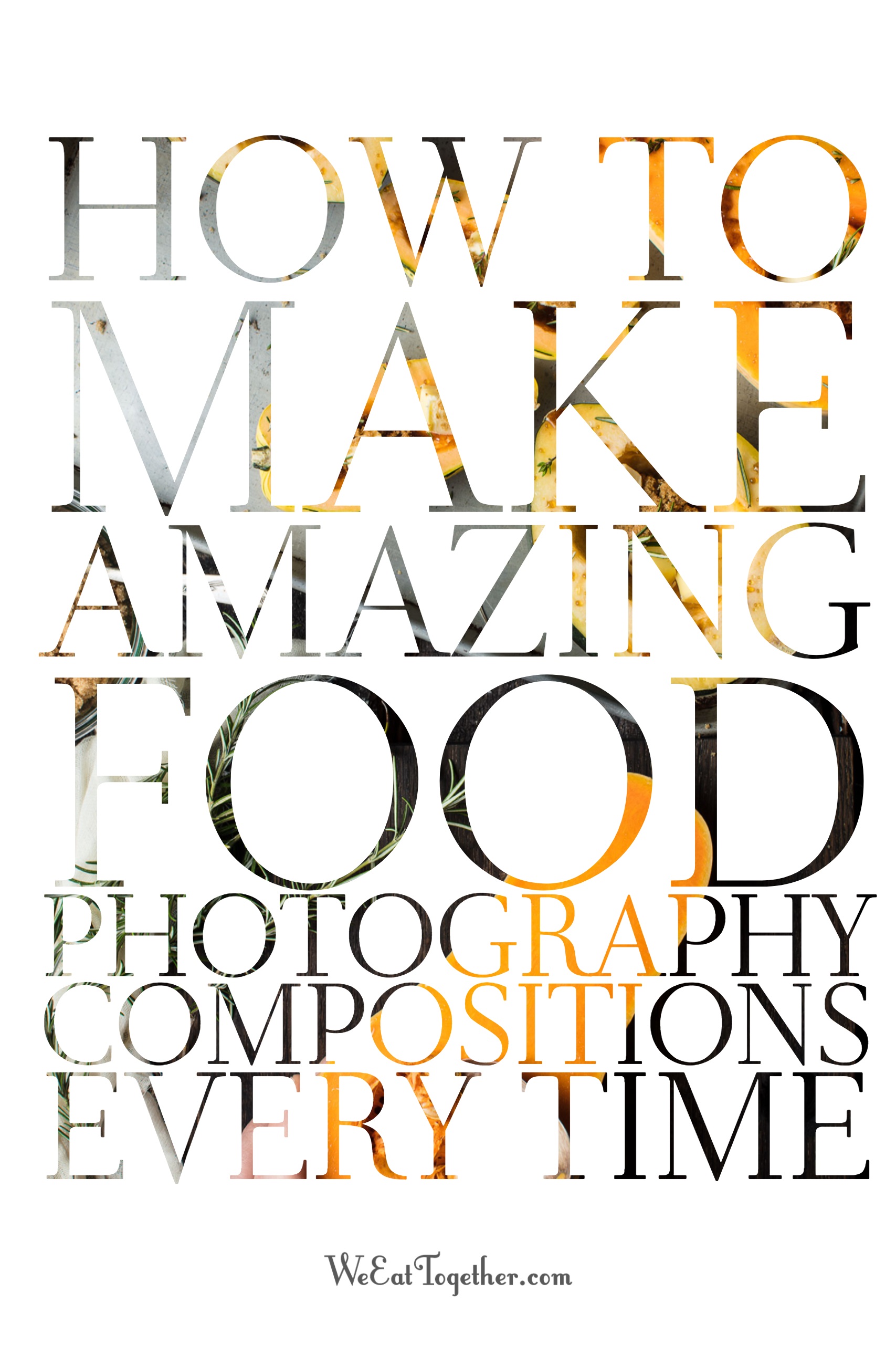
STYLING TO THE CAMERA: THE NUMBER ONE RULE FOR GREAT FOOD PHOTOGRAPHY COMPOSITIONS
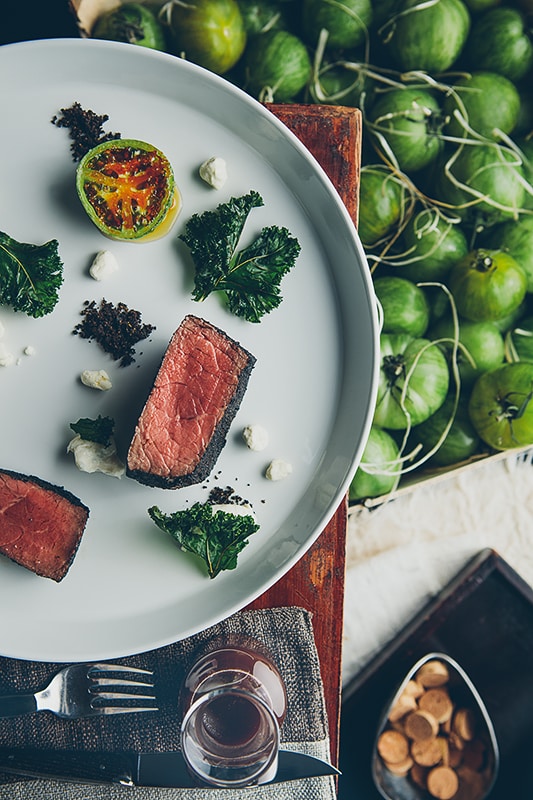
It’s a mindset and............ a TRIPOD.
Wait. Before you think I’m nuts and click off, let me explain.
First it’s not only a tripod, that is just the tool you’ll use. To reach compositional Shangri-La you need to approach your food photography with the right mindset.
It’s the mindset of building a world inside your frame, one beautiful layer at a time. From an empty table, you construct your story piece by piece until you have one final image to be proud of. A world that didn’t exist until you let your imagination loose.
If you want to read some great compositional wisdom, have a look at David duChemin's latest post "Is Composition Over-rated?".
Lazy Techniques That Kill Food Photography Composition
Creating your food photography composition by styling to the camera allows you a single point of reference; an unchanging view that you consult with each addition to your story. With every addition or subtraction from your story you take a picture. With each change, you cycle between the images to judge how your composition and story is progressing. Below are the problems you face if you don't let that frame dictate your composition.
This Manfrotto 055 Tripod HERE with the XPRO ball head is my favorite tripod, I currently have three in my studio. Not only are they a great lightweight studio tripod, that's easy to take on-location they have a nice adjustable center column for when you want to use it as a quick overhead camera tripod setup.
Picking up and putting down your camera as you compose your food photography
Picking up an putting down your camera every time you want to make the tiniest adjustments to your scene has to be one of the slowest creative killing practices. You have to refocus, reset the exposure and recompose the frame with every single styling change.
It takes so much MORE energy.
If you style to the camera you choose your camera settings once and then only micro adjustments are needed after that.
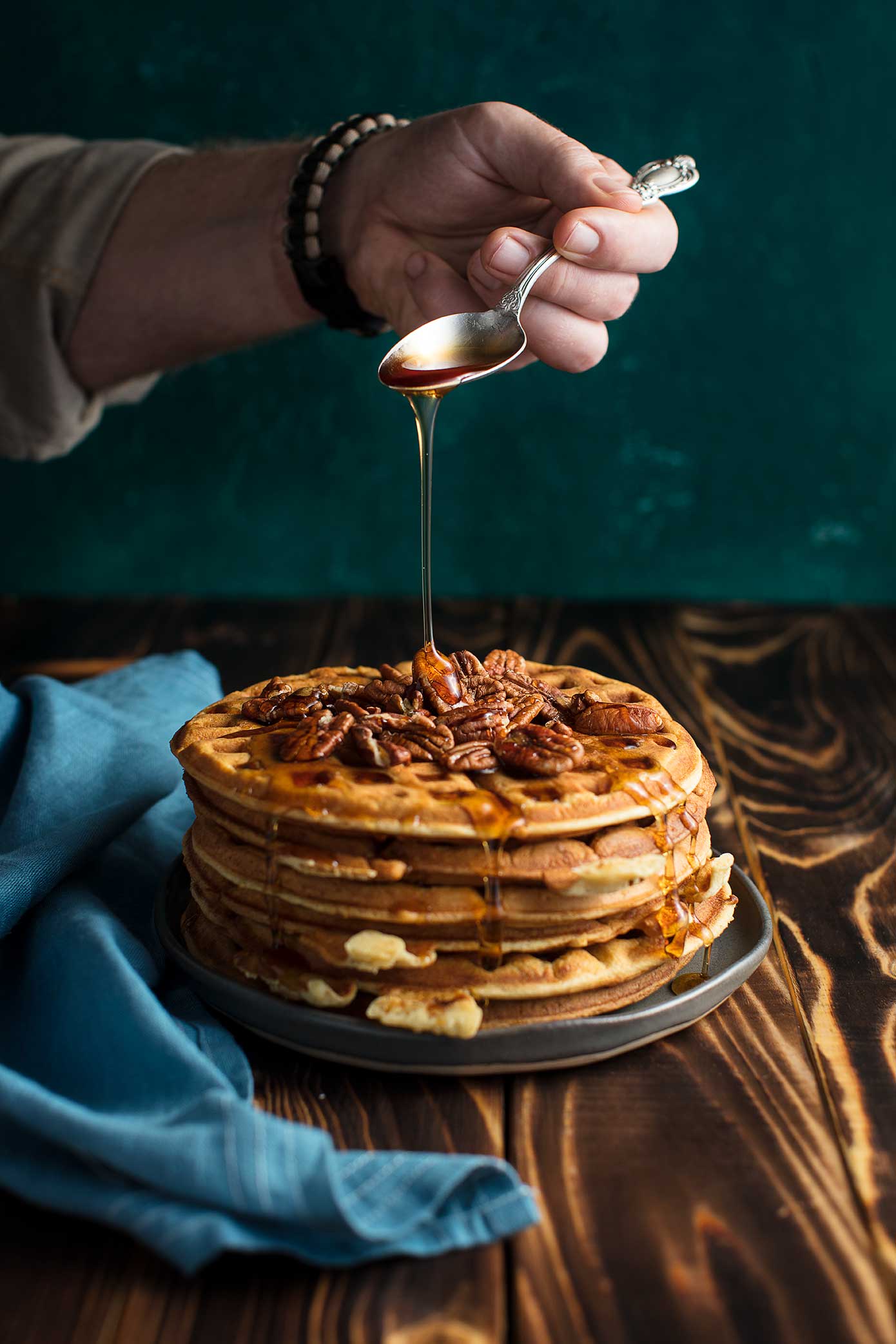
Styling to the camera speeds up the whole creative process. It frees your hands and free yourself from the technical aspects of the camera, to focus on creating a beautiful composition within the frame.
Not tracking the changes in your food photography composition
It is really important to have the ability to quickly make compositional decisions, keeping what is working and discarding what is not. Styling to the camera makes it super simple to track those changes to your composition.
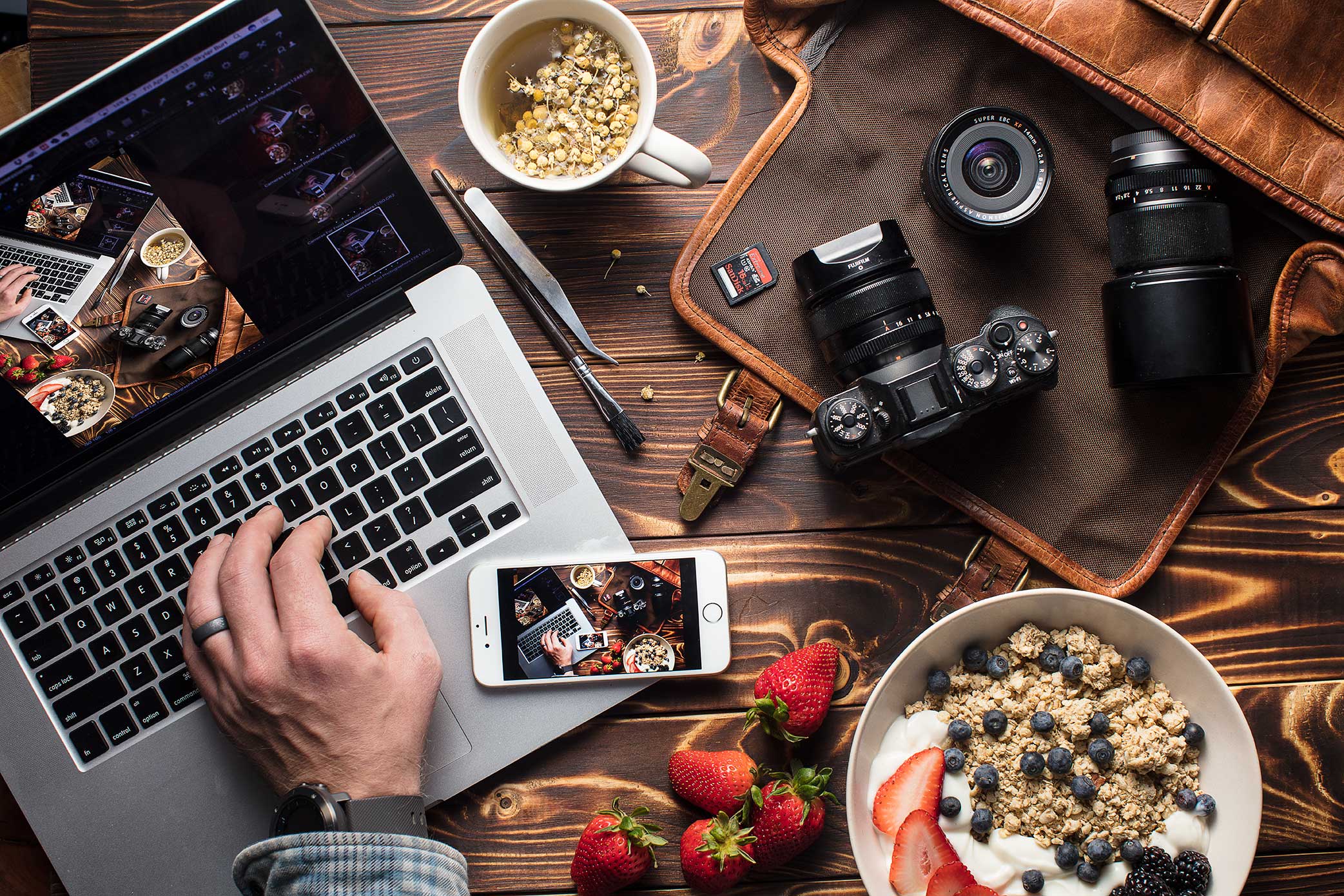
From the camera angle to the size of objects, handholding your camera adds heaps of changes with every click. Almost too many to track.
However, if your food camera is on a tripod and you have your point of reference, then only small changes happen with each photo. Allowing you to see how the smallest movement of a crumb will affect your story.
Styling your entire scene before picking up your camera
Some people say having your camera fixed hinders your creativity because you can't bounce around the table looking for interesting angles (don’t tripods move?), but locking that camera down is actually liberating.

When your camera is on a tripod, you’re able to add and subtract props and food very simply.
However, if your scene is already set up before you take the photo then you’re in a constant seesaw battle of repair and deconstruction.
You’re not building, which is what food photography is about. Constructing the scene with a plan and using compositional techniques as your tools.
Unlike landscape or photojournalism, food photography at it’s core is about freeing yourself from being forced to work with what is already present in reality.
With the mindset of styling to the camera you have the ultimate control over your food photography composition, creating your own from scratch with each new image.
Style to the camera then sit back and revel in the amazing world YOU created within that frame.
